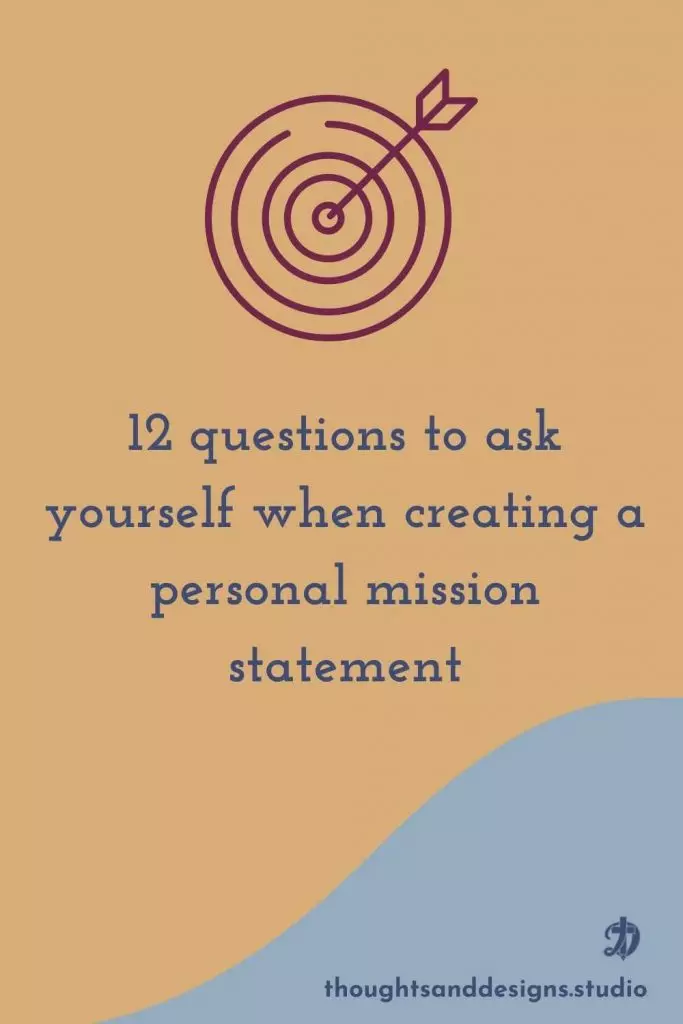If you struggle to cut through the noise and shiny object syndrome of life, consider creating a personal mission statement.
I wrote about why creating a personal mission statement can help you decide and focus your priorities in life, but how do you do it? What steps do you take to create a personal mission statement?
For me, creating a personal mission statement had to start with self-reflection. I took some time to think on these 12 questions I’ve included below, to uncover what is truly important in my life. And, as I’ve written in other posts, knowing what is important will help you prioritize what is important.
This exercise helps individuals and business owners alike.
The Personal Mission Statement in Action
You may understand this better in terms of a business situation I constantly deal with.
As a website designer, I urge my clients to think through their business goals, values, and priorities before we design anything. Knowing what you want to happen with a website is important stuff. I can create a pretty website, but if it doesn’t help you meet your business goals, what good is it?
Design is all about amplifying your message and helping your audience hear and understand what you bring to the table. In order to create a website that does what you want it to do for your business, I have to understand what you’re all about and where you want to go. What do you want to have happen here?
And before I can understand any of that, you need to understand that stuff, as the person hiring the web designer.
In the same way, before you get going designing your life (or at least the next season in your life), you need to have a reasonable grasp on this kind of thing. What are you all about? What do you want to have happen?
It’s only after you have a destination that you can plug that information into the map app and figure out how to get there.
Creating a personal mission statement is like creating your long-term goals, in that you’re considering where you want to go in life. But really, creating a personal mission statement goes beyond that.
You’re not just looking at where you want to go, but what is important to you, what you value, and other big picture considerations.
12 Questions to Consider
There are 12 questions to ask yourself and meditate on while you are creating your personal mission statement. The best way I find to do this activity is to take some time to think about each question. Then do a brain dump for each question.
Ideally, taking a good amount of time works better than rushing the process. As I re-evaluate my Personal Mission Statement every year, I take an hour or two each day to consider just one of these questions. Then I write everything that comes to mind, free form.
- What is important to you? Without editing your answer, write down everything that comes to mind when you consider what is important to you.
- What do I value? This can include character traits or personal items. Again, don’t edit. Just write down everything that comes to mind.
- What kind of impact do you want to have by the end of your life?
- Who do you want to impact?
- What makes you feel happiest?
- What have you succeeded in doing in the past?
- 20 years from now, what do you want to be, feel, and experience?
- Where do you want to go mentally, physically, and spiritually in 20 years?
- What do you want people to think of when they think about you?
- What are your natural personality traits? For example, I’m pretty introverted and have natural social anxiety, but I’ve always set ridiculous “goals” for myself that disregard these as if I could discipline them out of me. You want to have an honest picture of who you really are, as is.
- What are your strengths and weaknesses?
- How would you sum up “Tell me about yourself” in 1-2 sentences?
Evaluating your answers
Once I finish answering these questions (usually with 1-2 pages of very sloppy notes per question), I take some more time to go through the answers and find common themes. Sometimes, I cross out things that I don’t really love but have been successful at.
I group the answers are similar or the same, and pull all of this information together. In my experience, after you’ve answered these questions, some patterns will emerge. As you’re creating your personal mission statement, there will probably be obvious themes in your answers. You’ll see what is important and central to you through these themes.
Summing up: Creating the Personal mission statement
Finally, comes writing the actual personal mission statement. There’s no right or wrong way to do this. You will not receive a grade.
It’s helpful to be succinct in how you write this out, keeping it to one or two sentences, describing what you value and how you walk out this calling in different areas of life. I like to write it out for the different roles I have in life.
For example, when I had younger kids, I wrote a personal mission statement for my role as a mom, and tried to keep that in mind as I raised them. Right now, I have a mission as a web designer that I keep in mind when making business decisions.
If you’re someone like me who is all over the place (see that question about natural personality traits… this isn’t necessarily a bad thing), creating a personal mission statement about each of your different areas of life might be helpful.
Keep your mission in front of you

Once you finish creating your personal mission statement, keep your mission statement in front of you as much as possible. There are a few ways to do this.
Some people like to use a vision board where they incorporate their mission statement on it. I’ve written more about making a vision board here. I like to use my mission statement on my vision board, but I also keep it in my bullet journal, as a task in my ClickUp setup (with a recurring reminder set, so I look at it daily), and on a small card in my wallet.
I’m easily distracted. These reminders help.
Need more? I have a whole board on Pinterest full of pins on this topic.

